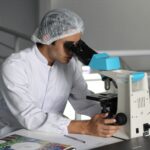 There are approximately 7 000 rare diseases affecting 25-30 million Americans, with 80% estimated to have a genetic basis. This presents a challenge for genetics practitioners to determine appropriate testing, make accurate diagnoses, and conduct up-to-date patient management. Exome sequencing (ES) is a comprehensive diagnostic approach, but only 25%-41% of the patients receive a molecular diagnosis. The remaining three-fifths to three-quarters of patients undergoing ES remain undiagnosed. The Stanford Center for Undiagnosed Diseases (CUD), a clinical site of the Undiagnosed Diseases Network, evaluates patients with undiagnosed and rare diseases using a combination of methods including ES. Frequently these patients have non-diagnostic ES results, but strategic follow-up techniques identify diagnoses in a subset. We present techniques used at the CUD that can be adopted by genetics providers in clinical follow-up of cases where ES is non-diagnostic. Solved case examples illustrate different types of non-diagnostic results and the additional techniques that led to a diagnosis. Frequent approaches include segregation analysis, data reanalysis, genome sequencing, additional variant identification, careful phenotype-disease correlation, confirmatory testing, and case matching. We also discuss prioritization of cases for additional analyses. For more information read the full article here.
There are approximately 7 000 rare diseases affecting 25-30 million Americans, with 80% estimated to have a genetic basis. This presents a challenge for genetics practitioners to determine appropriate testing, make accurate diagnoses, and conduct up-to-date patient management. Exome sequencing (ES) is a comprehensive diagnostic approach, but only 25%-41% of the patients receive a molecular diagnosis. The remaining three-fifths to three-quarters of patients undergoing ES remain undiagnosed. The Stanford Center for Undiagnosed Diseases (CUD), a clinical site of the Undiagnosed Diseases Network, evaluates patients with undiagnosed and rare diseases using a combination of methods including ES. Frequently these patients have non-diagnostic ES results, but strategic follow-up techniques identify diagnoses in a subset. We present techniques used at the CUD that can be adopted by genetics providers in clinical follow-up of cases where ES is non-diagnostic. Solved case examples illustrate different types of non-diagnostic results and the additional techniques that led to a diagnosis. Frequent approaches include segregation analysis, data reanalysis, genome sequencing, additional variant identification, careful phenotype-disease correlation, confirmatory testing, and case matching. We also discuss prioritization of cases for additional analyses. For more information read the full article here.
300
previous post
